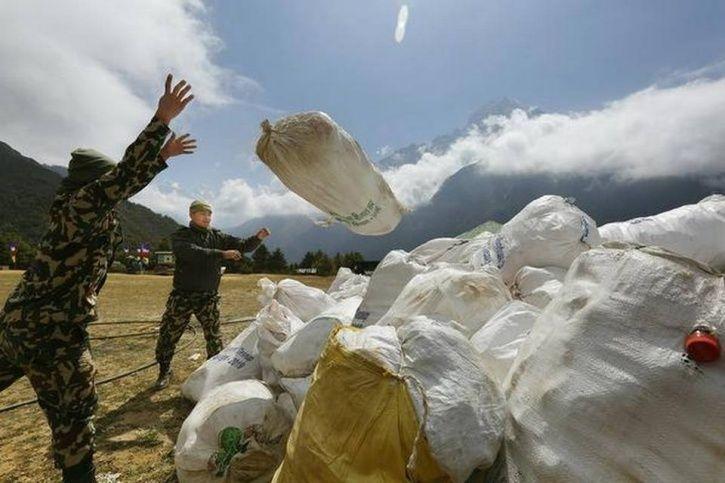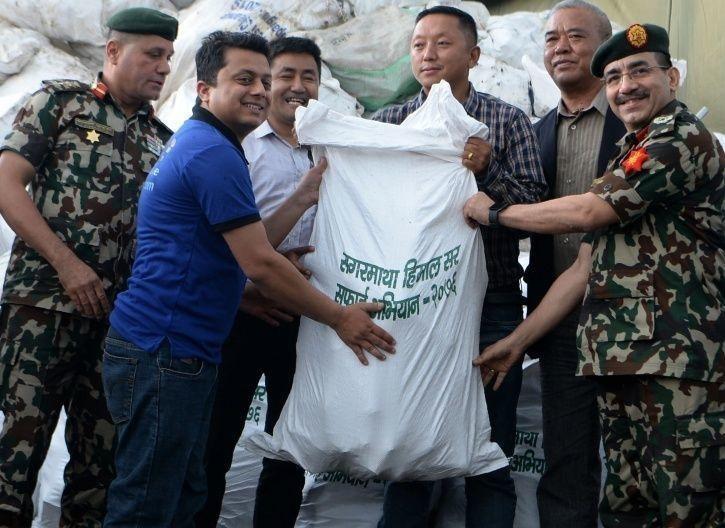It is obviously a problem if even the highest point in the world is being turned into a dumping ground. Sometime ago, we reported that 11 tonnes of waste was cleared from Mount Everest, which is covered with everything from human excrement, used oxygen bottles, torn tents, ropes, broken ladders, cans and plastic wrappers left behind by climbers. This was done in a bid to save Mount Everest and also remove the threat of water being polluted.
In the clean up drive, the government, some non-government agencies and a team of Sherpa came together, and they not only cleared over 10,000 kg of garbage but also removed four dead bodies that were found there.

Instead of transferring the waste to a landfill near Kathmandu, Nepal decided to segregate, process and recycle a large amount of that waste into raw materials that could be used in various products.
The head of Kathmandu-based social enterprise, Blue Waste to Value, Nabin Bikash Maharjan reportedly said, “We segregated the collected materials in different categories such as plastic, glass, iron, aluminium and textile. Of the 10 tonnes of waste collected, two tonnes have been recycled. The remaining eight were soil mixed with wrappers and semi-burned items, which could not be recycled.”
Mr Maharjan and his team are working with hotels, hospitals, municipalities and other offices, to work out how they could maximise the recycled waste and reduce the amount of waste to be sent to landfills.

The company also suggested that a processing unit be set up in the area itself, so that the segregation process consumes less time and can be managed easily.
Blue Waste to Value collaborates with another company named Moware Design to make recycled products like bottles, which are then sold online.
According to reports Ujen Wangmo Lepcha from Moware Designs informed that the recycled glass products are trendy and can be used as home, office or restaurant decor. The waste has been recycled into decorative items like plates, candle covers, travel cups, flower vases and even accessories.
These are sterilized and hence, free of bacteria.
The prices of these products range from 350 to 2,000 Nepalese rupees. This recycling venture has also proved to be a source of livelihood for local women who design the recycled items.
This is a very inspiring initiative. Not only does it ensure that maximum waste is recycled, it is also providing livelihood for some locals and putting the recycled products back in the market. Authorities at other places could learn from this, especially because plastic waste, which can never be completely disposed off, is becoming a leading world problem by the way.
